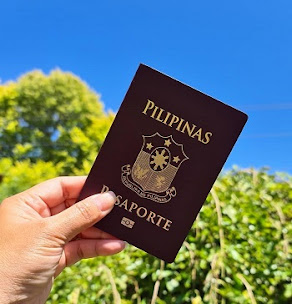From the evolution of traditional food and sake to samurai swords and castles to Japan’s creation myths, Hyogo is the ideal place for visitors to explore Japanese culture off the beaten track.
But that doesn’t mean Hyogo is remote — quite the opposite. Direct buses run between Kobe’s central Sannomiya Station and both Kansai International Airport and Osaka International Airport (Itami Airport); Kobe even has its own domestic airport that is currently preparing to accept international flights. In addition, the bullet train connecting Tokyo with Osaka and Kyoto also stops, only about 15 minutes past Osaka, at Shin-Kobe Station. While Kobe itself contains plenty to explore and experience, unlocking the rest of Hyogo Prefecture is easy via either public transportation or a rental car.
Here’s how visitors can enjoy Hyogo’s rich culture while taking a journey through Japan’s captivating past and present.
Classic cuisine and sake in the modern-day
 |
| A hamburg set meal at Teppanyaki Kobe Fuji utilizing Kobe beef and local vegetables | © Don Kennedy |
Kobe beef enjoys a deserved spot among the pantheon of internationally renowned Japanese cuisine. In fact, the roots of Japanese wagyu beef run even deeper in Hyogo. Many famous wagyu varieties — including, of course, Kobe beef — can trace their origin to Hyogo and its Tajima cattle. It’s said that virtually all Japanese black cattle are descended from one Tajima cow, named “Tajiri-go,” which was born in 1939 in Hyogo’s lush Ojiro area.
Kobe offers visitors myriad ways to enjoy its famous wagyu, and each dining experience has a story behind it. At Sannomiya Kobe Plaisir, for example, guests can engage in a quintessential teppanyaki course meal that showcases the best of the prefecture’s beef and seasonal produce. For a completely different though no less delicious experience, Ganso Gyozaen in Kobe’s Chinatown serves up Manchurian-style gyoza potstickers made with varying percentages of Kobe beef. What’s more, Kobe soul food restaurant Teppanyaki Kobe Fuji aims to make Kobe beef accessible to anyone, no matter their budget, alongside providing other comforting local dishes.
Beyond Kobe, Hyogo Prefecture is just waiting to share other highlights of traditional Japanese cuisine. High-quality Japanese rice and the sake made from it are two representative local products. Miyake Sake Brewery, established in 1819 and located in Hyogo’s Kasai City, sources a Hyogo-specialty variety of rice called Yamadanishiki exclusively from local farmers, and its sake reflects the unique characteristics of the region. The brewery is accessible from Kobe in one hour by car or roughly two hours by public transportation. Visitors can enjoy an extensive brewery tour and tasting that even samples the clear local water used to produce the sake.
 |
| Miyake Sake Brewery | © Don Kennedy |
Miyake’s sake is sold extremely locally — it’s rare even to find in Kobe. However, visitors can experience pairing it with traditional Japanese cuisine at Izumi, a seasonal kaiseki restaurant with a Michelin star also in Kasai City. Kaiseki course meals grew from the culinary traditions of tea ceremonies and Buddhist monks. Although Izumi’s chef trained at restaurants in Kyoto, he returned to Hyogo with his wife to take over Izumi from his parents. While Izumi originally served simpler fare, the pair wanted to share their kaiseki dishes with their hometown too.
The Warriors’ World
 |
| Kikyo Hayamitsu Japanese Sword Smith. © Don Kennedy |
Stepping further back into Japan’s past, Hyogo also offers unique glimpses into the world of the iconic warriors who, for centuries, helped shape the country and its culture: the samurai.
At Kikyo Hayamitsu Japanese Sword Smithy, located in Hyogo’s Aioi City, visitors can watch swordsmith Kikyo Hayamitsu forge high-quality Japanese swords. In the first part of the forge tour and workshop, visitors learn about the history of Japanese swords and the techniques necessary for crafting them. In the sword-making process, special steel is heated to around 1,200 degrees C and folded multiple times to remove impurities; the flames dancing around the metal change from blue to red as the impurities melt away. Sparks fly as the sword is hammered into further refinement. In the second part of the tour and workshop, visitors experience for themselves the process of making a small knife. Reservations can be made online or via email.
Located less than an hour away by car, the Shiota Onsen area offers hardworking smiths — and anyone else — a chance to relax and refresh. With its natural hot springs believed to have been discovered in Japan’s Nara period (710–794), the area’s high-quality water has been used for relaxation and medical purposes since the samurai’s final heyday, the Edo period (1603–1868).
 |
| Himeji Castle during cherry blossom season |
Another iconic image from the age of samurai is the Japanese castle. Although Hyogo’s Himeji Castle is renowned for its glistening white walls and striking form, a quick trip north from Himeji via the Bantan train line can also bring visitors to the 15th-century Takeda Castle Ruins, known as “the castle in the sky.” Offering a commanding view of the surrounding area from its mountain perch, Takeda Castle was originally built as a military outpost, and the rocks for its stone walls were carried by hand from a nearby quarry. Even after the castle was largely destroyed, locals maintained its stone foundation over the centuries. The ruins are most spectacular in the early morning from mid-September to early December when the rising sun hits mist wafting up from the river below.
 |
| Takeda Castle. © Yoshida Toshihisa |
For visitors to Hyogo on a tighter schedule, trekking Mount Rokko near Kobe provides another opportunity to escape modern city life and experience Hyogo’s great outdoors. The Arima Onsen area, accessible by ropeway from the mountain, also offers a convenient alternative to the more remote Shiota.
Legendary beginnings
Hyogo Prefecture traces its history even earlier than the age of samurai and contains locations central to Japan’s creation myths.
Located on Awaji Island, roughly an hour away from central Kobe by bus or car, Izanagi Shrine is dedicated to the Shinto deities Izanagi-no-Mikoto and Izanami-no-Mikoto, the divine couple who, according to legend, created the Japanese archipelago. Less crowded than the shrines and temples of Kyoto, Izanagi Shrine is believed to be the oldest shrine in Japan and is certainly one of its most important. With lucky timing, visitors might even get to experience one of the various festivals held at the shrine throughout the year.
Near the shrine’s main hall stands an impressive 900-year-old camphor tree, which is said to house the spirits of Izanagi and Izanami and to which people pray for a happy marriage and safe birth. In Shinto mythology, Izanagi is the father of the sun goddess Amaterasu Omikami, the chief deity of the Shinto pantheon.
On the south side of Awaji Island, Nushima Onokoro Cruise offers boat tours around nearby Nushima Island, another key location in the Izanagi and Izanami legend. According to myth, the couple used a heavenly spear to stir chaotic waters, and the drops that fell from their spear formed Nushima Island. There, the deities proceeded to “give birth” to the rest of the archipelago, starting with Awaji Island. On the boat tour, a knowledgeable guide explains the island’s special rock formations, visible only from the water, and their various cultural significances to both local fishers and legend. Although tours are conducted in Japanese, the guide can also share information easily in English.
 |
| Otherworldly rock formations are reflected in still water at Genbudo Park. © Don Kennedy |
For visitors more drawn to natural history than to myth, the geometric rock formations of Genbudo Park, located in northern Hyogo, showcase a different facet of the region’s distant past. Designated as a Natural Monument of Japan, the park contains walking trails, caves, and lush greenery in addition to its mesmerizing stone patterns, which formed 1.6 million years ago from magma flows in a volcanic eruption. But even here, legend is never far: The largest of the five caves, the eponymous Genbu cave, was named after a mythical creature with the body of a tortoise and the head and tail of a serpent, an image evoked by the rocks’ snaking pillars and hexagonal joints.
In conclusion: From past to future
As international tourism to Japan rises, visitors are eager to take time to explore the country off the beaten track and seek out authentic experiences, while locals hope to welcome guests across a wide range of locations, without concern about over-tourism. The conveniently located and culturally rich Hyogo Prefecture is a clear win-win for visitors and locals alike. Building on its long and compelling history, Hyogo is sure to be a favorite destination going forward.



























Nice at ang sarap naman mag explore dito
ReplyDelete